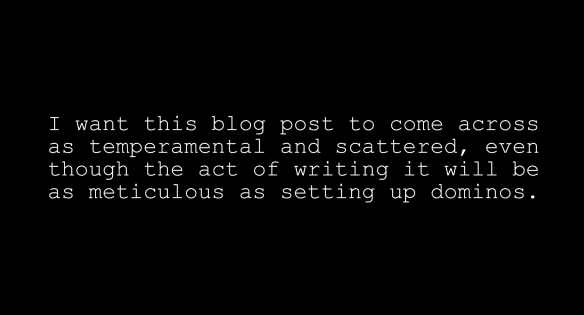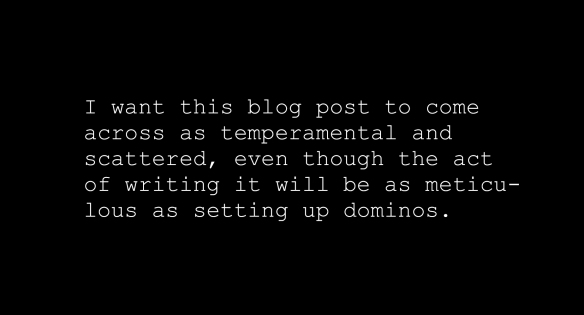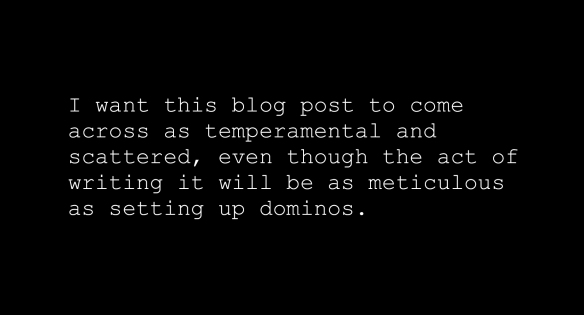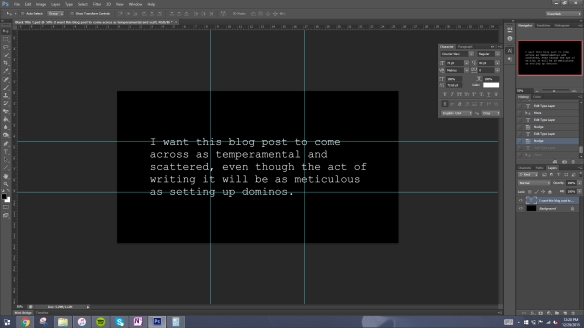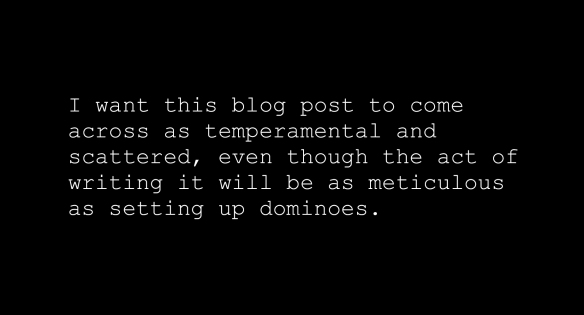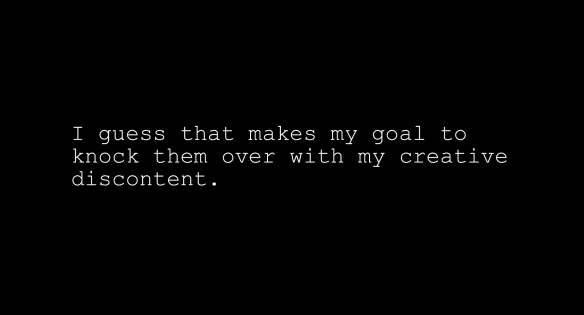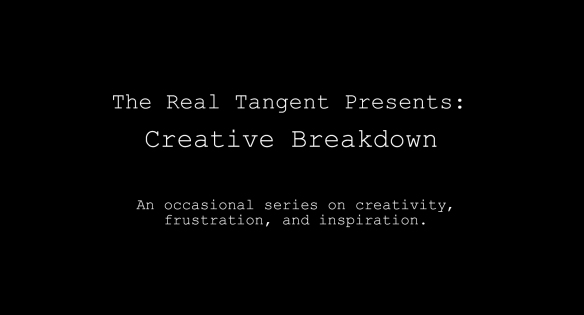About three weeks ago, I began my first serious effort at learning the clarinet, and it gave me an entirely new appreciation for what it means to be a student of music. And by that, I mean the clarinet kicked my butt and reminded me what it means to completely suck. But I wasn’t discouraged: I found a way to look at my failures and actually be quite inspired. It was a whole experience.
Some context: saxophone is my primary instrument. Most sax players who come up through their elementary school band program start on clarinet in 5th grade and transition to alto saxophone by 7th grade. I’m a third-generation saxophone player, so my dad already had an alto at home when I started band. With some parental meddling, I was able to skip clarinet altogether and get a head start on the sax. I was told it’s easier for students to start on clarinet and move to saxophone later. But having never picked up a clarinet myself, I always accepted this conventional wisdom without questioning why nobody ever does this in reverse. That is, not until now, SEVENTEEN YEARS LATER, when I needed to record the simple melody of Silent Night on clarinet for this year’s Christmas arrangement.
You see, saxophone is the easiest wind instrument in the whole concert band to learn. You basically just blow into it, and if you wiggle your fingers the right way, it plays the right notes. Unlike the flute or clarinet, the keys are quite big, so it doesn’t matter if you have small or large fingers. The upper register of the sax is played identically to the lower register, except you add the octave key with your left thumb. That’s pretty much it. I mean, actually developing a good tone requires years of practice, but it takes relatively little effort for a beginner to successfully navigate around the full range of the instrument.
Meanwhile, a brand new clarinetist could spend weeks or months practicing their instrument and still have trouble playing smoothly above a middle A. The clarinet has a nasty design quirk fittingly named “the break” (I assume because it breaks your spirit to continue playing the clarinet). On one side of the break, Middle A is played with all but one of the holes in the clarinet wide open, so the air escapes at the top of the instrument. On the other side of the break is the B above, where you need to use nine fingers to close virtually every hole and force air out of the bell all the way the bottom. It’s very awkward to go from all open to all closed. It’s easy to misplace your fingers. And your air instantaneously must travel much farther, so you need to support your playing with a lot of it or you might not make any sound at all. Worse yet, you could accidentally hit a really high harmonic and produce a horrible squealing, honking noise. Crossing the break is a big deal. It needs a lot of attention and practice. I estimate it’s the number one reason why a beginning clarinet player and an angry goose sound virtually indistinguishable. I was totally unprepared to struggle this much.
When I first started clarinet last month, I did so having completely forgotten how hard it is to learn an instrument you can actually play written music on. I spend a lot of time on piano and I know some guitar and ukulele chords, but actually playing written parts on those instruments would be a painstaking note-by-note process because I’ve never really practiced that skill. It took barely ten minutes of attempting to play written clarinet music for me to finally understand why music teachers start their sax players on clarinet: if they all started on saxophone, none of them would want to leave it behind for something so much more difficult.
I realized I wouldn’t be able to learn Silent Night from a fingering chart the way I learned Pink Floyd’s Wish You Were Here on my acoustic guitar by looking at a few chord diagrams. I needed to learn how all the notes on the clarinet fit together and how one register transitions to another in order to make any meaningful progress. In other words, this wasn’t a “fake it till you make it” situation. I actually needed to sit down and learn the clarinet properly. So I did exactly what worked the last time: I found a copy of the clarinet edition of the 5th grade band book I used back in 2002 and opened it up to page 1.
That’s how I found myself in the absurd position of hitting pause on working out 4-part voicings for my jazz reharmonization of Silent Night so I could practice Hot Cross Buns. My 5th grade band book does a good job of introducing new notes one at a time so you can build your range without getting overwhelmed by memorizing dozens of note fingerings. Obviously, knowing which holes and keys to press on the clarinet is a big piece of the puzzle. But I also found myself asking really basic questions I haven’t had to think about in years. At what angle am I supposed to hold this thing? How strong should my reeds be? How much of the mouthpiece should actually go into my mouth? What do I adjust if I’m out of tune? Is my thumb supposed to hurt if I play for a long time?
I had discovered new depths of having no idea what I was doing. Everything felt so new and foreign. Each time I brought the clarinet out of its case, I flipped and spun around the disassembled pieces trying to remember how to even put the dreaded black tube together. I Googled whether it was weird to play a clarinet with a neck strap to help hold it up because that’s what I’d become so acclimated to on the much heavier saxophone. When I sounded bad playing my grandpa’s clarinet, I went and borrowed my dad’s clarinet to find out if it was me or the instrument. (It was me. But in my defense, my dad’s clarinet has better intonation.) I’d strayed far beyond my musical zone of comfort for the first time in years. It was profoundly strange to learn something at the age of 27 I hadn’t struggled with since I was 10. I was reduced to becoming excited when I finally accomplished something as simple as sightreading London Bridge Is Falling Down with no mistakes. If you had told me a month ago I’d be in this situation, I wouldn’t have believed you. I’d have thought I was “better” than London Bridge. Of course, nobody is “better” than London Bridge. You have to start somewhere, and you have to be unafraid of repeated and repeated failure. This was genuinely one of the more humbling things I’ve done as an adult, and it happened in the comfort of my own home.
Probably the biggest difference from my experience learning saxophone was that THANKFULLY, I’ve already learned how to read music. I can’t imagine how much harder learning clarinet would be if I had to learn to read treble clef all over again. Except…I kind of can imagine it, because at some point in my life, I did exactly that. I learned how to play saxophone and how to read sheet music at the same time. And I did it as a 10-year-old child without the benefit of a fully developed brain, and the eye-hand coordination, patience, and discipline which comes with reaching adulthood. (Not to mention nearly two decades of experience on other instruments.)
As I was nearing three total hours of screwing up crossing the break in Silent Night, I was weirdly in awe of my 10-year old self for persevering through those first and worst several months of being a musician. Actually, I was weirdly in awe of every single friend I know who started learning an instrument through their school’s band or orchestra. Learning an instrument is NOT easy or natural. Your mistakes are obvious, unpleasant, and often loud and embarrassing. Troubleshooting your mistakes can be unintuitive if not mystifying for new, inexperienced players. And it can take months or longer to reach a level where you’re making music and producing a tone you really enjoy. There’s a reason (okay, several reasons) why so few kids who start an instrument in 5th grade continue with it all the way through to their senior year, but I think a big one is that many of them don’t see all the practice as rewarding enough. As I was squeaking away in my house, I reminded myself that so many of my friends made it all the way through high school band and orchestra as better musicians and stronger people. If they could do it as children, I could learn Silent Night in C major as an adult. It was so peculiar but so lovely to take inspiration by imagining my friends as 10-year-olds struggling right along with me.
It’s only now–nearly 10 years after high school–that I’ve become broadly and deeply thankful so many of my friends and I were able to have such a profoundly formative lesson in patience, memory, coordination, self-confidence, teamwork, and aesthetic appreciation through our public schools’ music programs. If you wanted to learn a wind instrument in 2002, you had few choices but to join your school’s band and sit in a room with a music teacher for an hour each week. I was even lucky enough to have a dad with an extra saxophone in the closet who helped instruct me. But the school’s band program provided structure, regiment, and community to the learning process, which made it sustainable over many years. If it weren’t for music education in public schools, I probably would never have learned any instruments at all, even the ones sitting in my parents’ closet. My life would be immeasurably worse off. I didn’t even know I had an interest in music until I was gifted the opportunity to start playing it.
That said, there has never in human history been a better time to learn an instrument on your own as an adult. If you can get your hands on one, you have the benefit of a rich, diverse, and accessible internet full of musicians and music educators who freely and enthusiastically share their knowledge and expertise. Endless forums and blogs and YouTube channels dedicated to teaching pretty much anything about music you could ever want to know are out there waiting. All you have to do is search for it. If you’ve ever wanted to pick up an instrument, or if you haven’t played yours in a couple years, give it a try! Sure, the goose honks can be discouraging. But there’s something deeply satisfying in hearing yourself improve and making a sound that’s good and pleasing–so satisfying that even the honks and squeaks are worth it. There is so much joy to be found in making the air sing just because you can.
As a wise friend of mine once said, “Some of our talents we’re supposed to use to make the world better, and some of them we’re supposed to use to make the world a bit more beautiful.” I’ve always liked how she implied creating beauty is an obligation. And I’ve always enjoyed how my drive to fulfill that obligation has never felt like work to me. Not even practicing crossing the break.







